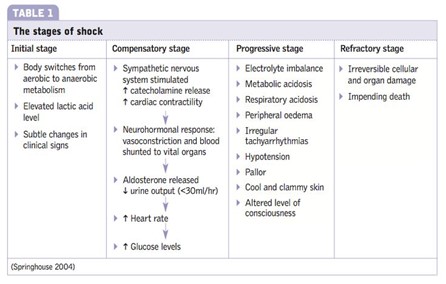The medical-surgical nurse is caring for a 55-year-old female patient after surgery. The patient's respiratory rate has increased from 12 to 22 breaths/min, and the pulse rate has increased from 86 to 110 beats/min since the patient was last assessed 4 hours ago. What action by the nurse is best?
Assess the patient's tissue perfusion further.
Ask if the patient needs pain medication.
Document the findings in the patient's chart.
Increase the rate of the patient's IV infusion.
The Correct Answer is A
The increased respiratory rate and pulse rate can be indicators of physiological changes or potential complications in the patient's condition. These changes may suggest alterations in tissue perfusion or other underlying issues that require further assessment.
Assessing the patient's tissue perfusion includes evaluating additional vital signs, such as blood pressure, oxygen saturation, and capillary refill time. Assessing skin color, temperature, and moisture, as well as peripheral pulses, can also provide important information regarding tissue perfusion.
B. Pain medication (option B) is incorrect because the increased respiratory and pulse rates could also indicate other factors that require assessment before administering pain medication.
C. Documenting the findings in the patient's chart (option C) is incorrect because it should not be the primary action at this point. Assessing the patient's condition and determining appropriate interventions take priority.
D. Increasing the rate of the patient's IV infusion (option D) is incorrect because may not be the most appropriate action without further assessment. The patient's increased respiratory and pulse rates may not necessarily be related to hydration status, and it is important to assess the patient comprehensively before making changes to the IV infusion rate.
Therefore, the best action by the nurse in this situation is to further assess the patient's tissue perfusion to gather more information and determine the appropriate course of action.
Nursing Test Bank
Naxlex Comprehensive Predictor Exams
Related Questions
Correct Answer is ["A","B","D","E"]
Explanation
These manifestations occur as compensatory mechanisms in response to decreased blood volume and compromised tissue perfusion. The body attempts to compensate for the inadequate circulating volume by increasing heart rate (A) and respiratory rate (B) to enhance oxygen delivery.
D. The decreased systolic blood pressure (D) is a result of decreased cardiac output and vasoconstriction in an attempt to maintain perfusion to vital organs.
E. The decreased urine output (E) is a result of decreased renal perfusion due to decreased blood volume.
C. Decreased pulse rate in (option C) is incorrect because it is not typically seen in the compensatory stage of hypovolemic shock. The body tries to increase heart rate to maintain cardiac output and compensate for the decreased blood volume.
F. Bilateral crackles in (option F) is incorrect because the lung bases are more commonly associated with conditions such as pulmonary edema or fluid overload, rather than the compensatory stage of hypovolemic shock.
It's important to note that the manifestations of shock can vary depending on individual patient factors and the underlying cause of shock. Therefore, a comprehensive assessment and clinical judgment are necessary to fully evaluate the patient's condition.
Correct Answer is D
Explanation
In the compensatory stage of shock, the body initiates various mechanisms to maintain perfusion to vital organs and restore homeostasis. Activation of the renin-angiotensin system is one of the compensatory responses. The decreased blood flow and oxygen delivery to the kidneys stimulate the release of renin from the kidneys. Renin acts on angiotensinogen, converting it into angiotensin I, which is further converted to angiotensin II by the action of angiotensin-converting enzyme (ACE). Angiotensin II is a potent vasoconstrictor and also stimulates the release of aldosterone, leading to sodium and water retention. These mechanisms aim to increase blood pressure and cardiac output and restore fluid balance.
A. The initial stage of shock in (option A) is incorrect because it is characterized by inadequate tissue perfusion and the activation of various compensatory mechanisms, including the release of stress hormones. However, the renin-angiotensin system is not specifically mentioned as activated in this stage.
B. The progressive stage of shock in (option B) is incorrect because it occurs when compensatory mechanisms fail to maintain adequate perfusion, leading to worsening hypoperfusion and organ dysfunction. The renin-angiotensin system continues to be activated during this stage, but it is primarily associated with the compensatory stage.
C. The refractory stage of shock in (option C) is incorrect because it is the stage of severe and prolonged hypoperfusion, where organ failure becomes irreversible. The renin-angiotensin system may still be activated, but it is not the primary focus of this stage.
Therefore, the activation of the renin-angiotensin system occurs during the compensatory stage of shock.

Whether you are a student looking to ace your exams or a practicing nurse seeking to enhance your expertise , our nursing education contents will empower you with the confidence and competence to make a difference in the lives of patients and become a respected leader in the healthcare field.
Visit Naxlex, invest in your future and unlock endless possibilities with our unparalleled nursing education contents today
Report Wrong Answer on the Current Question
Do you disagree with the answer? If yes, what is your expected answer? Explain.
Kindly be descriptive with the issue you are facing.
